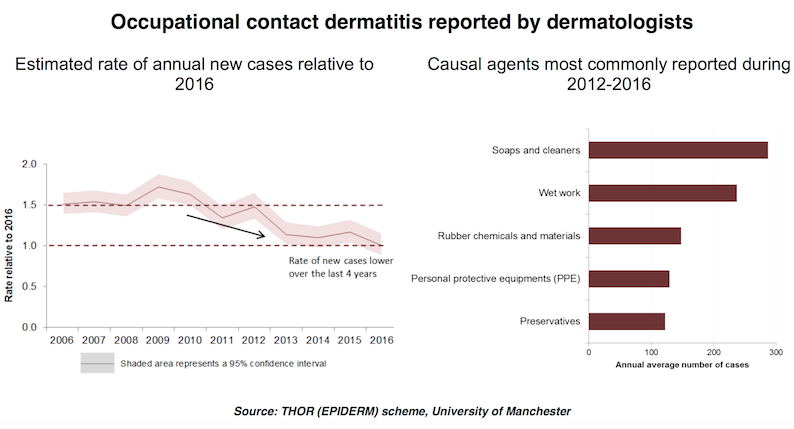 Cleanzine: your weekly cleaning and hygiene industry newsletter 11th April 2024 Issue no. 1109
Cleanzine: your weekly cleaning and hygiene industry newsletter 11th April 2024 Issue no. 1109
Your industry news - first
The original and best - for over 20 years!
We strongly recommend viewing Cleanzine full size in your web browser. Click our masthead above to visit our website version.
HSE annual occupational health & safety statistics analysed
 In the UK, 12,000 lung disease deaths annually are estimated to be linked to past occupational exposures, according to latest Official Statistics, and 18,000 new cases of breathing or lung problems are self-reported as being caused or made worse by work.
In the UK, 12,000 lung disease deaths annually are estimated to be linked to past occupational exposures, according to latest Official Statistics, and 18,000 new cases of breathing or lung problems are self-reported as being caused or made worse by work.
These are among the conclusions, relating to occupational ill-health, of annual health & safety statistics recently published by the Health & Safety Executive.
A report on work-related skin disease, based on data from the EPIDERM surveillance scheme operated by the University of Manchester in collaboration with dermatologists, notes that cases of occupational contact dermatitis (OCD) - the most common type of work-related skin disease - continues to be caused by agents including soaps, cleaning materials and working with wet hands. The highest rates seen by dermatologists among florists, hairdressers, beauticians, cooks and certain manufacturing and healthcare-related occupations [5].
Although the estimated annual rate of new cases of OCD is likely to have reduced, this is not necessarily the case for OCD caused by exposure to some specific agents, the HSE report notes.
The longer-term downward trend in annual incidence appears to have been particularly influenced by a reduction in cases caused by allergens rather than by irritants, to some extent associated with reduced use of powdered latex gloves, particularly among healthcare workers.
Work by the University of Manchester also suggested that increased numbers of cases of irritant dermatitis may have resulted from initiatives to increase hand hygiene.
Other analyses by the University of Manchester show a reduction in allergic contact dermatitis due to chromates that is likely to be a result of reduced exposures in cement following the introduction of EU legislation in 2005, and that there has been an increase in the incidence of allergic contact dermatitis (ACD) caused by acrylates among beauticians; also an increase in ACD in healthcare workers attributable to isothiazolinones.
The legacy of asbestos use continues to dominate mortality statistics, accounting for approximately 40% of annual mortality from respiratory disease; lung cancer associated with other agents accounted for approximately 23%, COPD for approximately 32%, and - in 2016/17 - coalworkers' pneumoconiosis for 587 deaths, asbestosis/silicosis for 19 deaths, and allergic alveolitis/bissinosis two deaths.
HSE estimates that mesothelioma deaths (2,542 in 2016/17), due to asbestos exposures prior to 1980, will peak and start to decline from 2018/19.
HSE has published five detailed statistical commentaries on asbestos-related disease, work-related asthma, COPD, silicosis and coal worker's pneumonconiosis, and other occupational lung diseases (allergic alveolitis, bissinosis and allergic rhinitis).
Although overall prevalence of self-reported work-related breathing or lung problems has been relatively constant over the last decade, HSE notes that: "There is some evidence of an increase in the annual incidence during the latest three years: the estimate of 18,000 new cases per year (95% confidence interval: 13,000-22,000) was statistically significantly higher than the estimate of 10,000 new cases per year (95% CI: 7k to 14k) in the previous three-year period".
A separate assessment of trends in the incidence of specific occupational respiratory diseases based on statistical modelling of reports to the SWORD scheme has also been published... There was an overall downward trend in incidence of asthma, but not so in respect of some specific causative agents, such as flour.
30th November 2017







